Make a model WWII bomb shelter
Make a model bomb shelter.
In this 3rd part of the craft project on how to Make a model WWII bomb shelter you will now be adding the sloping grass bank on the back of the shelter.
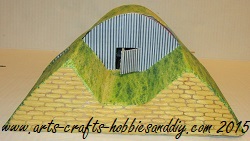
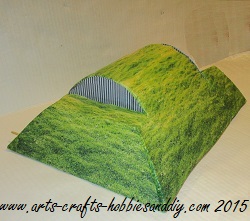


Parent supervision required !!.
For this simple project you will need:
A stiff corrugated cardboard box, e.g. A family size crisps box.
Ruler
A craft knife or Scissors
Pencil or pen
Paint
A paint brush
PVA adhesive or sticky tape
Clothes Pegs
Glue spreader or glue stick
Stage 8: Back of the model WWII bomb shelter.
With both the main bomb shelter and it's front made you're now ready to make the sloping grass bank on the back of the shelter.

Its a very similar process to how you made the front only this time you only need to make three components, two sides and a back piece which will form the top and slope.
First make two identical pieces like the ones shown below. These pieces attach to your bomb shelter back and will form the sloping grass banks.

You can see in the picture that both side pieces have tabs on three sides. You will also notice that the top tab is predominantly a rectangle type shape. This forms a tab that you'll need to fold over to fit a third component. The third component will form the top and back of the slopes shown below.
The fourth edge that does not have tabs will be at the base of the shelter.
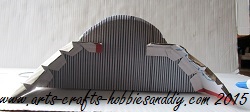
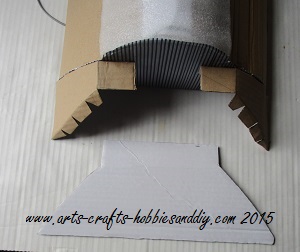
To make the back piece, hold a piece of cardboard against the two side pieces that you have already fixed in place and then draw the shape required. Also make sure that you allow for the rectangular shape at the top. This will form the top of the slope as shown.
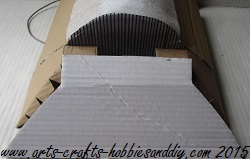
When sticking the back piece together ensure that all the tabs are in firm contact with all the components of the shelter. See below
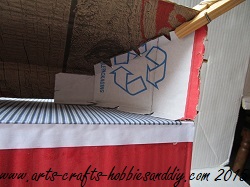

With this completed your Anderson shelter should now be ready for finishing on the outside as shown below.
To Finish either paint the shelter with the colour's of your choice or as described in PT2 simply print off a grass effect from an image on the web as described in PT2, Stage 7: Adding some detail to the front of the shelter. Shown below.
Stage 7: Adding some detail to the front of the Air raid shelter.
Once you have finished assembling the front of your bomb shelter you're now ready to add the finishing touches.
Either paint it with the effect that you want or alternatively source an image from the internet and apply it to your finished frame.
How to add a grass effect to a model.
As you can see in the picture below I have chosen a grass effect. To do this find the image you require and copy it into MS Paint. However you may need to scale it down to match the size of your model. As can be seen in my example. Once its scaled down to the correct size go to page setup and set your page to A4. Unless of course you have access to an A3 printer. Remove all borders, although the printer will add a minimum border. This is OK, but check it first in print preview and if you are happy with the image, press print.
The model shown in this tutorial is quite large so it was necessary to print off 4 copies to cover the whole shelter once it had been built.
Once you have printed off your decorative sheets use them to add some finishing touches to the front of your Anderson shelter.
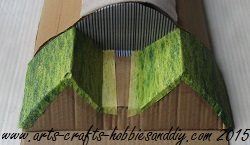
You will also see that I have added a corrugated Iron effect to the shelter front. This can be done exactly the same as adding the grass effect and is discussed earlier.
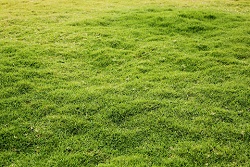
I chose this image because it will add a raised 3D effect to the sides of my air raid shelter. Make sure you overlap the front edge to enable you to stick the edge down. As shown in the example above, carefully make several scissor snips along the overlapping edge. Then glue each piece to the front sloping face. The reason for this is so that when you add your sand-bag effect to the front the cut edges of the sandbags will have a grass effect behind. This will make them look more real as if they are slightly overgrown with grass.
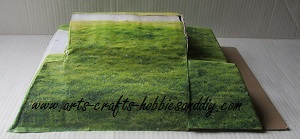
Finishing off the model WWII bomb shelter.
As you can see I have started with the sides of the shelter. If you have chosen to print off your grass effect as I have, try to match the edges of each piece to create the illusion of one continuous grass strip as shown above. Cover your whole shelter until it looks like the image below.
